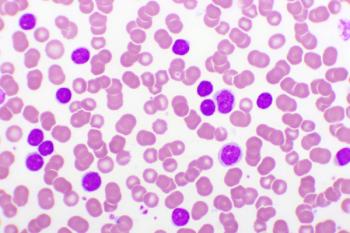
5 Findings From the January 2019 Health IT Issue of AJMC®
For the eighth year, The American Journal of Managed Care® (AJMC®) presents its annual issue focused on health information technology (IT). This year, articles featured insights on health information exchange use, data breach consequences, telemedicine experiences, and more. Here are 5 findings from the research published in the issue.
For the eighth year, The American Journal of Managed Care® (AJMC®) presents its annual issue focused on health information technology (IT). This year, articles featured insights on health information exchange (HIE) use, data breach consequences, telemedicine experiences, and much more. Here are 5 findings from the research published in the issue.
1. Hospital data breaches are associated with a 64% increase in annual advertising expenditures
While settlements, penalties, and class-action lawsuits are significant financial burdens on breached hospitals, the analysis showed that advertising campaigns also contribute to the total costs. “Advertising costs subsequent to a breach are another cost to the healthcare system that could be avoided with better data security,” the authors concluded.
2. Keeping an EHR system up to date requires substantial maintenance efforts
Many hospitals considering launching an electronic health record (EHR) system focus on the initial costs and efforts to install the system, but
They noted that the costs and impacts of maintenance warrant more attention because “the true benefits of EHR adoption may only emerge with persistent attention to enhancing the EHR-based workflows and tools that drive improvements in care.” They suggested that maximizing the benefits of an EHR system requires significant investments of expertise and teamwork beyond the initial implementation.
3. APM participation is associated with greater HIE diversity, breadth, and depth, but lower volume
These findings suggest that value-based payment may be provoking investments in HIE infrastructure, the authors wrote. However, there also seems to be an incentive to limit the number of partners they share data with. Despite the signs of strong infrastructure, “significant challenges to achieving high HIE volume remain and may require more targeted policy actions,” they concluded.
4. Health system organizational structure influences odds of advanced health IT use
Hospitals across the United States vary widely in their adoption of advanced health IT capabilities, and at least some of this variation can be explained by organizational structure and EHR standardization, according to
The strongest predictor of advanced health IT adoption was the extent of EHR standardization, followed by the health system’s management and ownership of hospitals and medical groups, but the degree of centralized resource allocation was not a significant predictor. “Health system leaders looking to improve the diffusion of new technologies should consider ways to better standardize their implementation and use of EHRs to drive widespread adoption of and benefit from new features,” the authors suggested.
5. Patients and clinicians report satisfaction with telehealth visits for follow-up care
As more healthcare providers experiment with telehealth instead of in-person visits,
“These visits are not just replacements for in-office visits; they hold the possibility of new avenues for care delivery, more frequent but shorter encounters, and opportunity for earlier intervention,” wrote the researchers, who suggested further study on the optimal mix of virtual and in-person modes of care.
Newsletter
Stay ahead of policy, cost, and value—subscribe to AJMC for expert insights at the intersection of clinical care and health economics.









































